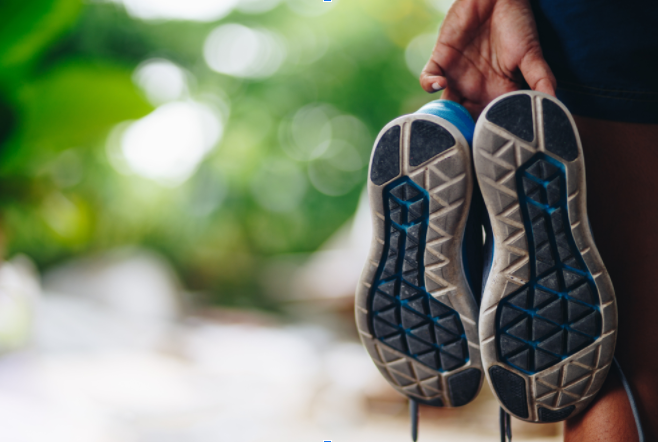 Athleisure has been having a moment for several years now. From comfy leggings to hoodies to sweats, wearing sporty clothing for every occasion is comfortable, practical and fashionable.
Athleisure has been having a moment for several years now. From comfy leggings to hoodies to sweats, wearing sporty clothing for every occasion is comfortable, practical and fashionable.
Sneakers are a big part of the athleisure trend. So much so that many popular brands and styles now have cult-like followings behind them. But when it comes to wearing shoes for function rather than fashion, do you know how to choose the right sneaker for the job? Keep reading to learn the real difference between different types of gym shoes.
Tennis Shoes
The term “tennis shoes” is often used alongside “gym shoes” and “sneaker” to refer to any and lace-up, rubber-soled shoes. In reality, actual tennis shoes are designed for the purpose you might expect: playing tennis.
Tennis shoes were first invented in the 1800s when aristocrats wore rubber-soled shoes to grip the court while playing tennis, the most popular sport among the wealthy at that time. The British Navy began searching for a shoe that would give sailors a good grip on the wet decks of ships and discovered these tennis shoes. The use of them spread widely after that.
Today, traditional tennis shoes still offer a gripping sole. They may also offer good foot support to allow athletes to bounce around the court with ease.
Running Shoes
Running shoes are designed to take a beating on pavement, a track or even on trails. They feature cushioning that is designed to absorb the impact of your feet pounding the ground with every step. Depending on the type of running you do and where you run, you can opt for a pair that will offer the most support, as well as additional features.
For instance, Nike’s VaporMax running shoes feature shock-absorbing soles that make it feel like you’re running on air, which means less strain on your joints and feet when running on sidewalks or paved surfaces.
Or, if you prefer running in the woods, trail running shoes often offer added protection on the front of your feet to protect your toes from impact with rocks or roots, as well as gripping soles to help you stay steady on slick surfaces.
Wearing the wrong shoes when you’re pounding the pavement can do more than just slow you down. It can also cause foot pain and blisters, and lead to more serious issues, like plantar fasciitis or tendonitis.
Cross-Training
The rise of fitness classes and gyms meant that many athletes or those looking to get into shape found themselves in need of a shoe that they could wear to run, lift weights or play sports. That’s where cross-training shoes come in.
These shoes offer the support of a running shoe with the lateral support of a tennis shoe and added cushioning, much like the shoes worn by volleyball players.
Sneakers for Fashion Over Function
There’s one more popular category of tennis shoes to consider: sneakers that are designed for fashion rather than sport. These shoes might look like running shoes or tennis shoes, but may not offer support or cushioning to protect you from injury. In some cases, these shoes may be flat-soled or even designed without laces. While they are great for wearing with athleisure wear, they shouldn’t be worn to run, workout or play sports.
Choosing the Right Sneaker
Choosing the right sneaker for your sport or workout can help you avoid injury and perform your best. Whether you’re pounding the pavement or attending a kickboxing class, make sure you’re equipped with the right shoe for the job.
Become a Harlem Insider!
By submitting this form, you are consenting to receive marketing emails from: Harlem World Magazine, 2521 1/2 west 42nd street, Los Angeles, CA, 90008, https://www.harlemworldmagazine.com. You can revoke your consent to receive emails at any time by using the SafeUnsubscribe® link, found at the bottom of every email. Emails are serviced by Constant Contact








